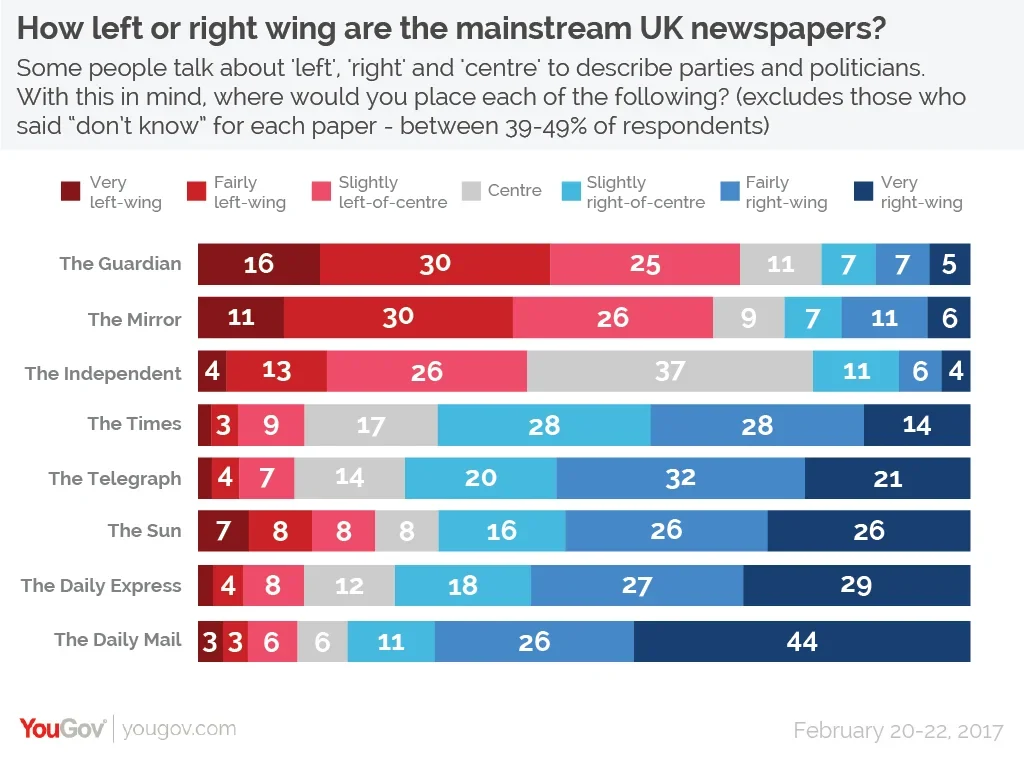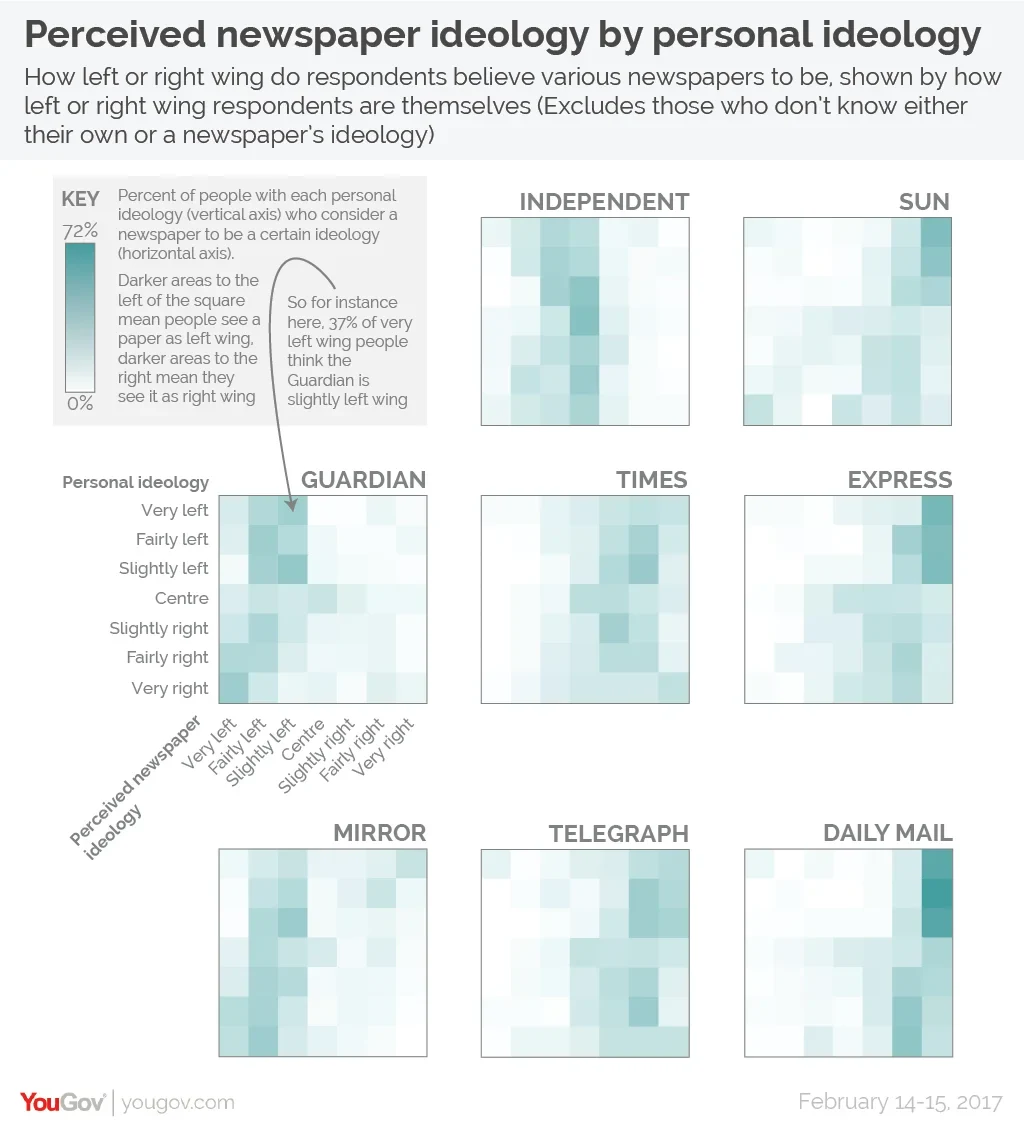Complaints that the British press has a right-wing bias have long been made by left-wingers – but is this a state of affairs the public recognises?
This article originally appeared in The Times
A long-held complaint from many of Britain’s left-wingers is the right wing bias of much of the UK’s national press. Just this week Owen Jones described the UK press as “largely run by a very small group of very right-wing media moguls who defend the status quo of which they are part. If you are on the Left and want to change society, the media will always come and get you”.
But how far are perceptions of the press’s right-wing bias held by the public at large? YouGov has now uncovered the Britons’ view on where mainstream national newspapers sit on the left-right political spectrum.
Of the eight national newspapers we asked about, five were seen to be predominantly right-wing, whilst two were seen as predominantly left-wing. The Independent, although no longer a physical presence in Britain’s newsstands, was seen as a broadly centrist publication.

(Please note that these results exclude those who said they didn’t know what the newspaper’s ideology was – a rate of between 39% and 49% for each newspaper)
In news that will surprise very few, the Daily Mail is seen as Britain’s most right-wing newspaper. Britain’s most read newspaper is described by 44% of Brits as “very right-wing”, far ahead of any other paper. In total, 81% considered the paper to be right-wing to one degree or another.
At the other end of the spectrum the Guardian is seen as Britain’s most left-wing newspaper, closely followed by the Mirror. Whilst Britons were about equally likely to see both publications as slightly left-of-centre or fairly left-wing, slightly more considered the Guardian to be “very left-wing”, at 16% compared to The Mirror’s 11%.
The Independent was the only newspaper that was seen as broadly centrist, albeit with a leftist bent. Just over a third (37%) of people consider it to sit in the political centre – more than double the rate for any other newspaper – whilst a further 26% said they thought it was slightly left-of-centre.
As for The Times, the majority of people consider the paper to be either slightly right of centre or fairly right-wing (28 per cent in each case), although it is seen as the least right-wing of the right-wing papers.
Personal ideology has relatively little impact on perception of newspapers’ ideology
As part of the survey, we also asked Britons to say how left or right-wing they are themselves. Whatever their ideology, the public were broadly in agreement about whether a paper was left or right-wing, the main difference being that left-wingers tended to see right-wing papers as more right-wing than right-wingers did (and vice versa).

What exceptions there are were most likely to come from those with views closer to the extremes of the political spectrum (i.e. those who described themselves as fairly or very left/right-wing).
Doubtless many people will be surprised to see anyone describe the Daily Mail as very left-wing, or likewise the Guardian as very right-wing. However, it was often these more staunchly left and right-wing Britons who felt this way.
The most extreme examples of this were in the case of the Mirror, which 29% of fairly/very left-wingers believe to be fairly/very right-wing, and the Sun which nearly a quarter (23%) of fairly/very right-wingers consider the paper to be fairly/very left-wing.
Ultimately how much this all matters would normally depend on your view of whether the press leads or simply reflects public opinion. But the newly released National Readership Survey figures for 2016 will make grim reading for those who worry a right-wing media bias. The results show that collective circulation of right-wing papers is leaving that of the left-wing papers for dust.
Whether or not many of the papers are actually right-wing, there is certainly a strong perception that they are and the circulation levels mean they have a lot more people getting their news every day from “right-wing” publications than “left-wing” ones.
Our research and the National Readership Survey highlight the tricky media landscape for those on the left. As Owen Jones himself goes on to say in his video, the left needs to find a strategy that will cut through to the people despite the dominance of the “right-wing” press.
Photo: PA












